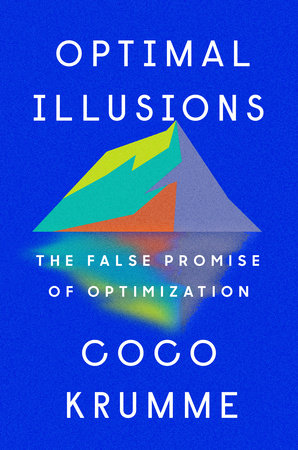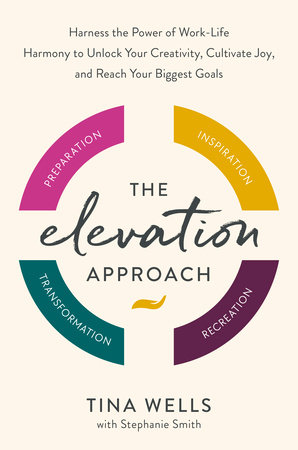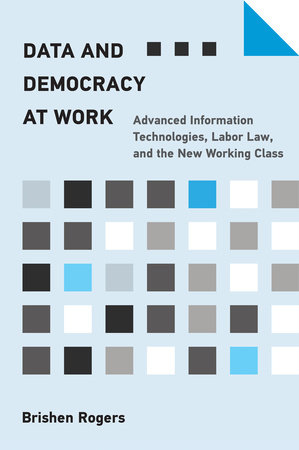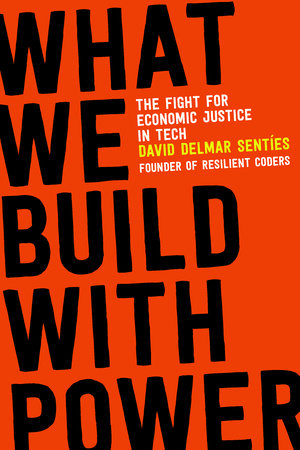Quick Summary
One Sentence Summary
“Difficult Conversations” by Bruce Patton, Douglas Stone, and Sheila Heen guides readers through the art of handling challenging dialogues with clarity and empathy.
Big Idea
The central premise of this book is that the way we approach difficult conversations can significantly impact both our personal and professional relationships, focusing on understanding the underlying emotions, intentions, and perceptions that drive these interactions.
Five Key Ideas
- The Three Conversations: Identifying the “What Happened,” “Feelings,” and “Identity” conversations that underlie every difficult discussion.
- Listening Skills: Emphasizing the importance of active listening to understand the other party’s perspective.
- Expressing Yourself Clearly: Learning to articulate your thoughts and feelings without causing defensiveness or aggression.
- Managing Emotions: Techniques for handling the intense emotions that often accompany tough talks.
- Problem-Solving Framework: Strategies for turning difficult conversations into constructive problem-solving sessions.
Actionable Advice
- Practice empathy: Try to understand the emotions and perspectives of the other person.
- Focus on learning: Approach each difficult conversation as an opportunity to learn something new.
- Be clear and honest: Express your thoughts and feelings clearly and respectfully.
- Prepare: Anticipate potential challenges and plan your approach to the conversation.
About the Author
Bruce Patton, Douglas Stone, and Sheila Heen are experts in negotiation and communication, with affiliations to the Harvard Negotiation Project. Their combined expertise offers practical insights into managing challenging dialogues effectively.
Read Next
- “Crucial Conversations” by Kerry Patterson, Joseph Grenny, Ron McMillan, and Al Switzler, for further insights into high-stakes conversations.
- “Getting to Yes” by Roger Fisher and William Ury, also from the Harvard Negotiation Project, for techniques on principled negotiation.
- “Nonviolent Communication” by Marshall B. Rosenberg for a compassionate approach to communication and conflict resolution.
In Depth
The Three Conversations
“Difficult Conversations” introduces a compelling concept: every challenging discussion is actually a blend of three different conversations – the “What Happened,” “Feelings,” and “Identity” conversations. This framework helps in dissecting complex interactions into more manageable parts.
The “What Happened” Conversation
This aspect delves into the differing perceptions, interpretations, and assumptions about the situation at hand. It’s where most people focus, debating facts and narratives. But the book emphasizes that it’s not just about what occurred; it’s also about understanding each party’s perception of the events. The authors argue that accepting these perceptions as subjective experiences rather than objective truths is crucial.
For instance, in a workplace conflict about missed deadlines, one person might view it as a matter of poor time management, while the other might see it as a result of unrealistic expectations. This difference in perception is at the heart of the “What Happened” conversation.
The “Feelings” Conversation
Feelings are often the most challenging part of a difficult conversation. The authors note that emotions are not just a byproduct but a core component of these discussions. Acknowledging and addressing emotions is key to understanding each other better and resolving issues.
The book provides an example of a family dispute over an inheritance. The surface-level argument might be about the distribution of assets, but underlying emotions like grief, betrayal, or a sense of injustice fuel the conflict. Recognizing and validating these feelings can transform the conversation.
The “Identity” Conversation
This layer is about the conversation’s impact on each person’s self-identity. Tough discussions often trigger internal questions like, “Am I competent?” or “Am I a good person?” Understanding how a conversation affects one’s sense of self is vital for handling it effectively.
For example, feedback at work might not just be about performance. It could also stir up deeper insecurities about one’s capabilities or worth. The book illustrates this with a scenario where a manager’s critique leads an employee to question their career choice, highlighting the importance of the “Identity” conversation.
“Each of these three conversations is like a complex song that requires us to listen for the melody and not just the words.” – Bruce Patton, Douglas Stone, and Sheila Heen.
By dissecting difficult conversations into these three components, the book provides a clear roadmap for navigating complex interpersonal dynamics. This approach doesn’t just apply to conflict resolution; it’s a tool for deeper understanding and empathy in all forms of communication.
Listening Skills
Effective listening is a cornerstone of managing difficult conversations. It’s about truly hearing and understanding the other person’s perspective, not just waiting for your turn to speak. This skill is crucial for uncovering the real issues beneath the surface.
Active Listening
Active listening involves fully concentrating on the speaker, understanding their message, responding thoughtfully, and remembering what was said. It’s not just about the words; it’s about the emotions and meanings behind them. This kind of listening can transform a conversation from a confrontation into a shared problem-solving session.
Example from a Negotiation Scenario
Consider a negotiation between a landlord and a tenant over rent increase. The tenant is upset and feels the increase is unfair. If the landlord only focuses on explaining the economic reasons for the hike, they miss addressing the tenant’s concerns and feelings of unfairness. By actively listening, the landlord might understand that the tenant is worried about affordability and feeling valued as a long-term resident. This deeper understanding can lead to more creative and acceptable solutions, like a gradual increase or additional amenities.
“Being listened to is so close to being loved that most people cannot tell the difference.” – Quote from the book.
The Power of Empathy
Empathetic listening goes a step further. It’s about putting yourself in the other person’s shoes and trying to feel what they are feeling. This doesn’t mean you have to agree with them, but it does mean acknowledging their feelings as valid. When people feel heard and understood, they are more likely to be open and less defensive.
Impact on Resolution
When both parties in a conversation feel listened to, the dynamic changes. It’s no longer about winning or losing; it becomes a collaborative effort to understand each other and find a solution. This approach can de-escalate tension and lead to more effective and lasting resolutions.
Incorporating active and empathetic listening into difficult conversations requires practice and patience. It involves letting go of the desire to be right and instead focusing on understanding the other person. This shift in approach can make all the difference in turning challenging interactions into opportunities for growth and connection.
Expressing Yourself Clearly
Clear expression in difficult conversations is about conveying your thoughts and feelings in a way that can be understood without sparking defensiveness. It’s a balance between honesty and sensitivity.
The Importance of Clarity
Being clear in communication helps prevent misunderstandings. It’s about saying what you mean and ensuring your message is received as intended. This clarity also involves being open about your feelings and viewpoints while being respectful to the other person.
Example: Workplace Feedback
Imagine a manager needing to address an employee’s performance issues. Instead of vague comments or aggressive criticism, the manager opts for clear, specific feedback. They describe the employee’s actions, the impact of these actions, and their own feelings about the situation. For example, “When you miss deadlines, it delays the whole project and makes me feel frustrated because I value our team’s efficiency.” This approach opens the door for a constructive dialogue rather than accusations or defensiveness.
“Speak for yourself with clarity and conviction.” – Quote from the book.
Avoiding Assumptions
A key aspect of expressing yourself clearly is to avoid making assumptions about the other person’s intentions or feelings. Assumptions can lead to misinterpretation and escalation of conflict. Instead, ask questions and express your thoughts without casting blame.
The Role of Non-Verbal Communication
Non-verbal cues like tone, facial expressions, and body language play a significant role in how your message is received. Being aware of these can help ensure your verbal message aligns with your non-verbal communication.
Impact on Understanding
Clear expression creates a foundation for mutual understanding. It helps the other person see your perspective and opens up the conversation for them to share theirs. This mutual sharing can lead to more effective problem-solving and relationship building.
In summary, expressing yourself clearly in difficult conversations is about being honest and direct, while also being respectful and empathetic. It’s about ensuring your message is understood as you intended and creating a safe space for the other person to share their perspective. This approach fosters a constructive dialogue where both parties feel heard and valued.
Managing Emotions
Handling emotions effectively is crucial in difficult conversations. It’s about recognizing your feelings, understanding their impact, and not letting them control the dialogue.
Recognizing Your Emotions
The first step is acknowledging what you’re feeling. Whether it’s anger, frustration, sadness, or fear, identifying your emotions allows you to understand their influence on your behavior and decisions.
Example: Family Disagreement
In a scenario where family members argue over a sensitive topic, such as how to care for an elderly relative, emotions can quickly escalate. One family member feels overwhelmed and unappreciated for their efforts, leading to resentment. Recognizing these feelings of resentment and exhaustion is vital. Only then can they communicate their need for support effectively, rather than letting the emotions drive them to lash out in anger.
“In difficult conversations, how you feel is as important as what you think.” – Quote from the book.
Controlling Emotional Reactions
Understanding your emotions doesn’t mean they won’t affect you. The key is learning to control your reactions. This might mean taking a moment to breathe before responding, or even postponing the conversation if emotions are too high.
Empathy for Others’ Emotions
Just as important is recognizing and empathizing with the other person’s emotions. This understanding can change the course of the conversation, making it more about mutual support than conflict.
Strategies for Calming Down
The book suggests techniques like reframing the situation, focusing on positive outcomes, and using calming practices like deep breathing or taking a break. These strategies help prevent emotions from overpowering the conversation.
Impact on Resolution
When emotions are managed well, it leads to more rational and productive discussions. It helps prevent the conversation from devolving into a heated argument where the main issues are lost among emotional reactions.
Managing emotions in difficult conversations is about self-awareness, control, and empathy. It’s understanding that while emotions are a natural part of these dialogues, they don’t have to dictate the outcome. By recognizing and managing your feelings, and empathizing with others, you can navigate these conversations more effectively, leading to resolutions that respect all parties involved.
Problem-Solving Framework
Effective problem-solving is a pivotal element in turning difficult conversations into constructive outcomes. It’s about shifting focus from winning an argument to finding solutions that work for everyone involved.
Identifying Common Goals
The process begins by identifying shared objectives. It’s crucial to understand that both parties often have overlapping interests, even in a conflict.
Example: Business Partnership Dispute
Consider two business partners clashing over expansion strategies. One wants rapid growth, while the other prefers cautious scaling. By applying a problem-solving framework, they realize their common goal: sustainable business success. They then explore options that balance growth with stability, such as a phased expansion plan.
“The single most important thing you can do in any difficult conversation is to keep shifting the conversation from whose fault it is, to what can be done about the problem.” – Quote from the book.
Brainstorming Solutions
Once common goals are identified, brainstorming solutions becomes the next step. This involves creative thinking and considering multiple options, even those that initially seem far-fetched.
Mutual Respect and Understanding
Throughout the problem-solving process, maintaining mutual respect and understanding is vital. It’s about acknowledging each other’s perspectives and working together towards a common solution.
Implementing Agreed Solutions
After finding a potential solution, the next step is agreeing on how to implement it. This might involve dividing responsibilities, setting timelines, and determining how to measure success.
Evaluating and Adjusting
Problem-solving doesn’t end with implementation. Regular evaluation and willingness to adjust the plan as needed are important for long-term success.
The problem-solving framework transforms difficult conversations from confrontational stand-offs into collaborative efforts. By focusing on common goals, brainstorming solutions, and implementing agreed-upon strategies with flexibility, it’s possible to turn challenging dialogues into opportunities for growth and positive change.
Actionable Advice
- Practice Active Listening: Really hear what the other person is saying, beyond just their words.
- Stay Calm: Keep your emotions in check to think clearly.
- Use “I” Statements: Express your feelings and thoughts without blaming the other person.
- Empathize: Try to understand the other person’s perspective and feelings.
- Ask Open-Ended Questions: Encourage dialogue and deeper understanding.
- Acknowledge Their Feelings: Show that you recognize and respect their emotions.
- Find Common Ground: Identify shared interests or goals to build a cooperative approach.
- Offer Solutions, Not Criticism: Focus on resolving the issue, not pointing fingers.
- Be Open to Compromise: Flexibility can lead to mutually beneficial outcomes.
- Follow Up: Check in after the conversation to ensure continued understanding and progress.
About the Author
Bruce Patton, Douglas Stone, and Sheila Heen are renowned experts in negotiation and communication. Patton, a co-founder of the Harvard Negotiation Project, focuses on conflict resolution and negotiation. His work emphasizes the importance of effective dialogue in resolving disputes. Stone, a lecturer at Harvard Law School, specializes in difficult conversations and how they impact relationships. He advocates for clear, empathic communication to foster understanding and resolution. Heen, also associated with the Harvard Negotiation Project, is a lecturer at Harvard Law School. Her expertise lies in the complexities of feedback and learning in challenging interactions. All three authors believe in the transformative power of skilled communication in personal and professional settings. Their collective insights, drawn from extensive research and practical experience, underline the significance of empathy, clarity, and structured approaches in managing tough conversations. This trio’s collaboration has significantly influenced the field of negotiation and interpersonal communication, offering practical tools for navigating difficult dialogues with confidence and compassion.
About the Author
Bruce Patton, Douglas Stone, and Sheila Heen are renowned experts in negotiation and communication. Patton, a co-founder of the Harvard Negotiation Project, focuses on conflict resolution and negotiation. His work emphasizes the importance of effective dialogue in resolving disputes. Stone, a lecturer at Harvard Law School, specializes in difficult conversations and how they impact relationships. He advocates for clear, empathic communication to foster understanding and resolution. Heen, also associated with the Harvard Negotiation Project, is a lecturer at Harvard Law School. Her expertise lies in the complexities of feedback and learning in challenging interactions. All three authors believe in the transformative power of skilled communication in personal and professional settings. Their collective insights, drawn from extensive research and practical experience, underline the significance of empathy, clarity, and structured approaches in managing tough conversations. This trio’s collaboration has significantly influenced the field of negotiation and interpersonal communication, offering practical tools for navigating difficult dialogues with confidence and compassion.
FAQ
Q: What is ‘Difficult Conversations’ about?
A: It’s a guide on handling tough dialogues with clarity and empathy, focusing on personal and professional relationships.
Q: Who are the authors?
A: Bruce Patton, Douglas Stone, and Sheila Heen, experts in negotiation and communication.
Q: Is this book suitable for workplace conflicts?
A: Yes, it provides valuable insights and strategies for managing conflicts in professional settings.
Q: Can this book help with personal relationships?
A: Absolutely. It offers techniques for improving communication in all types of relationships.
Q: Does the book offer practical advice?
A: Yes, it includes actionable strategies for effective communication and conflict resolution.
Q: How long is the book?
A: The length can vary by edition, but it typically ranges around 250-300 pages.
Q: Is prior knowledge of negotiation required to understand the book?
A: No, the book is written in an accessible way for readers with no background in negotiation.







